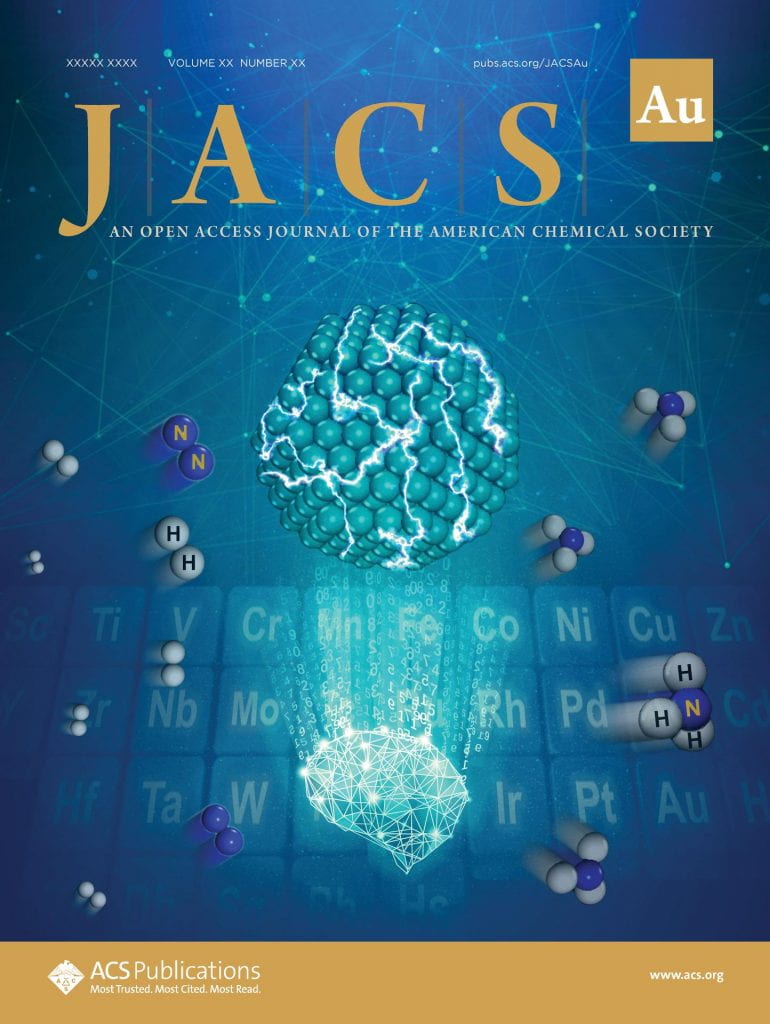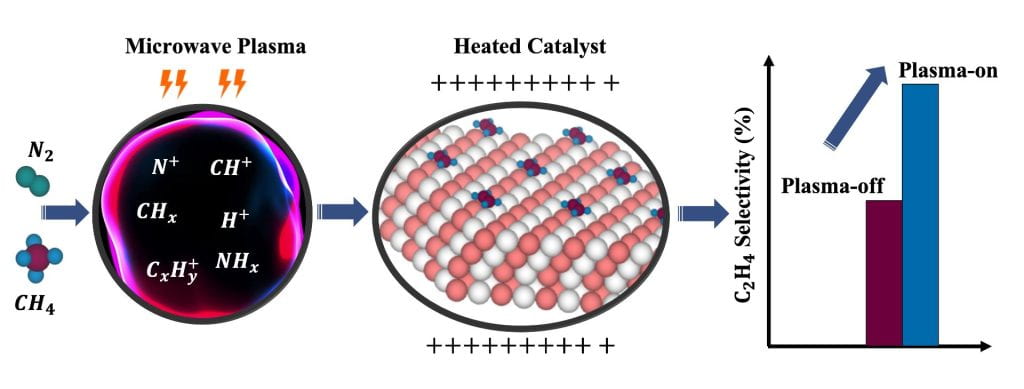(1) AI-boosted Field-Driven Catalysis
To utilize, store, and product hydrogen, we are interested in ammonia synthesis and decomposition using AI-boosted multi-scale simulations. In particular, we are interested in tuning the activity of ammonia synthesis and decomposition using electric fields and plasma.

Publications:
1. T. Mou†, H. S. Pillai†, S. Wang†, M. Wan, X. Han, N. M. Schweitzer, F. Che, H. Xin,* Bridging the complexity gap in computational heterogeneous catalysis with machine learning. Nat Catal 6, 122–136 (2023). https://doi.org/10.1038/s41929-023-00911-w
2. M. Wan, H. Yue, J. Notarangelo, H. Liu, F. Che*, Deep Learning-Assisted Investigation of Electric Field–Dipole Effects on Catalytic Ammonia Synthesis, JACS Au 2022 2 (6), 1338-1349, https://pubs.acs.org/doi/full/10.1021/jacsau.2c00003
(2) Carbon Dioxide Electroreduction to Multicarbon Hydrocarbons.
One of the most critical long-term global challenges at present is ensuring a sustainable supply of energy, creating sustainable energy storage, and improving the energy efficiency in the fuel production, transformation and final use of energy. A potential solution lies in the electrochemical conversion of CO2 emissions, which have been rising at unprecedented rates, into chemical fuels. In particular, we are interested in the interfacial phenomenon between organic ligands and inorganic metallic surfaces.

Publications:
1. M. Wan, Z. Gu, F. Che*, Hybrid Organic‐Inorganic Heterogeneous Interfaces Modulated Electrocatalysis: A Theoretical Study of CO2 Reduction to C2. ChemCatChem, 2021, https://doi.org/10.1002/cctc.202101224.
2. J. Li1,2,3†, A. Ozden1†, M. Wan4†, Y. Hu5, Z. Wang2, Y. Wang2, Y. Xu1, D.-H. Nam2, J. Wicks2, B. Chen2, X. Wang2, F. Li2, M. Graetzel3, F. Che4*, E. H. Sargent2* & D. Sinton1*, Silica-copper catalyst interfaces enable carbon-carbon coupling towards ethylene electrosynthesis. Nature Communications, 2021, 12, 2808. https://www.nature.com/articles/s41467-021-23023-0
3. M. Schreier, P. Kenis, F. Che, S. Anthony, Trends in electrocatalysis: The microenvironment moves to center stage, ACS Energy Letters, 2023, 8, 9, 3935-3940.
https://pubs.acs.org/doi/10.1021/acsenergylett.3c01623
4. Z. Yang†, M. Wan, Z. Gu*, F. Che*, CO2RR-to-CO enhanced by SAM and Ag catalytic interface, J. Phys. Chem. C, 2023, 127, 36, 17685–17693.
https://pubs.acs.org/doi/abs/10.1021/acs.jpcc.3c00352
5. M. Chhetri†, M. Wan†, Z. Jin†, J. Yeager, C. Sandor, D. Takyi Sekyere, C. Rapp, H. Wang, S. Lee, C. Bodenschatz, M. J. Zachman, F. Che*, M. Yang*, Atomically Dispersed PGMs Assisted Copper as a Dual-Site Catalyst to Boost Hydrocarbon Formation in Electrocatalytic CO2 Reduction, Nat. Commun., 14, 3075, 2023.
https://www.nature.com/articles/s41467-023-38777-y
6. Y. Xu, F. Che*. Beyond post-C-C coupling in CO2 electroreduction, views and news, accepted by Nature Chemical Engineering, 2024, 1(2), 134-135.
https://www.nature.com/articles/s44286-023-00019-9
(3) Microwave Catalysis

Multi-physics coupling (i.e., fluid mechanics, heat transfer, mass transfer) with detailed chemistry from microkinetic modeling is important to study energy-related, environmental-related topics, such as microwave catalysis, plasma catalysis, electrocatalysis, and field-driven catalysis
Publications:
1. S. Brown, S. A. Ibrahim, B. R. Robinson, S. Tiwari, D. Bhattacharyya, Y. Wang, F. Che*, J. Hu*, Ambient carbon-neutral ammonia generation via a cyclic microwave plasma process, ACS Appl. Mater. Interfaces, 15, 23255, 2023.
https://pubs.acs.org/doi/10.1021/acsami.3c02508
(4) Deep Active Learning Assisted Low temperature Plasma Catalysis.
Understanding and predicting the properties of low temperature plasma interaction with solid catalytic surfaces are important to design the catalyst materials and processes under low temperature plasma conditions. In particular, we are interested in microwave post plasma catalysis and non-thermal plasma catalysis.

Publications:
1. S. Tiwari†, S. A. Ibrahim†, B. Robinson, S. Brown, Q. Wang, F. Che*, J. Hu*, Post-plasma catalysis: Charge effect on product selectivity in conversion of methane and nitrogen plasma to ethylene and ammonia, accepted by Catalysis Science & Technology, 2023, DOI: 10.1039/D2CY02077G.
